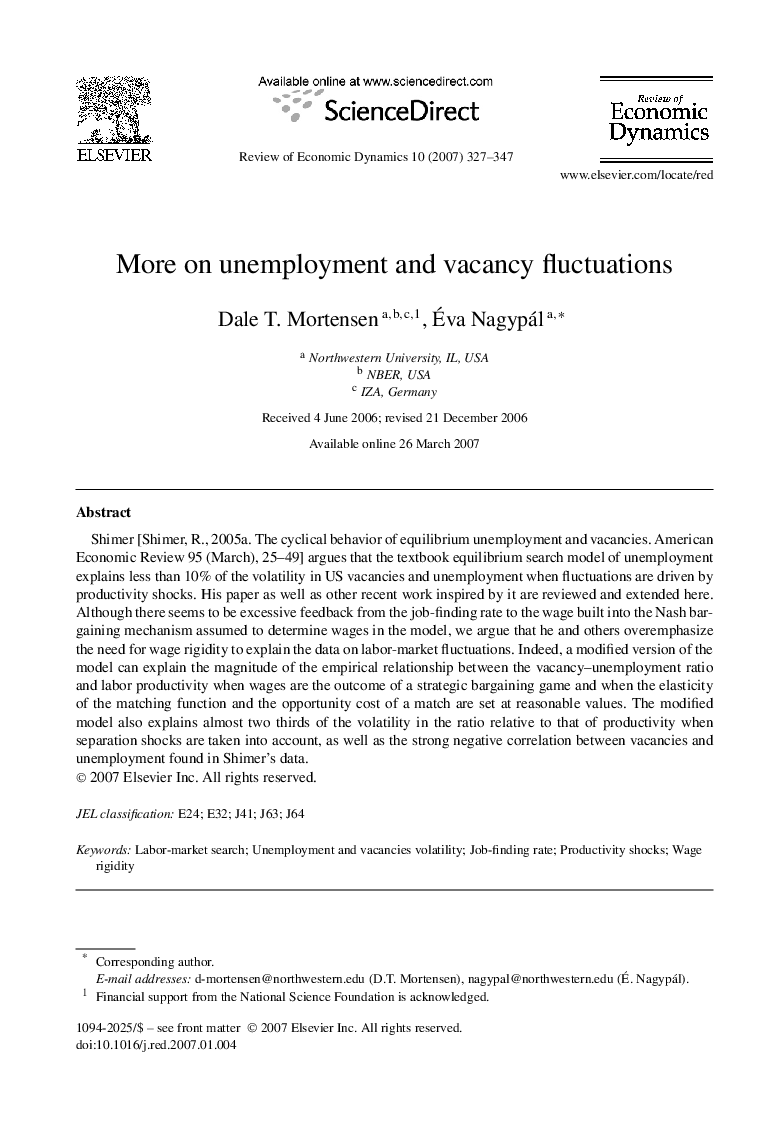| Article ID | Journal | Published Year | Pages | File Type |
|---|---|---|---|---|
| 986713 | Review of Economic Dynamics | 2007 | 21 Pages |
Shimer [Shimer, R., 2005a. The cyclical behavior of equilibrium unemployment and vacancies. American Economic Review 95 (March), 25–49] argues that the textbook equilibrium search model of unemployment explains less than 10% of the volatility in US vacancies and unemployment when fluctuations are driven by productivity shocks. His paper as well as other recent work inspired by it are reviewed and extended here. Although there seems to be excessive feedback from the job-finding rate to the wage built into the Nash bargaining mechanism assumed to determine wages in the model, we argue that he and others overemphasize the need for wage rigidity to explain the data on labor-market fluctuations. Indeed, a modified version of the model can explain the magnitude of the empirical relationship between the vacancy–unemployment ratio and labor productivity when wages are the outcome of a strategic bargaining game and when the elasticity of the matching function and the opportunity cost of a match are set at reasonable values. The modified model also explains almost two thirds of the volatility in the ratio relative to that of productivity when separation shocks are taken into account, as well as the strong negative correlation between vacancies and unemployment found in Shimer's data.
